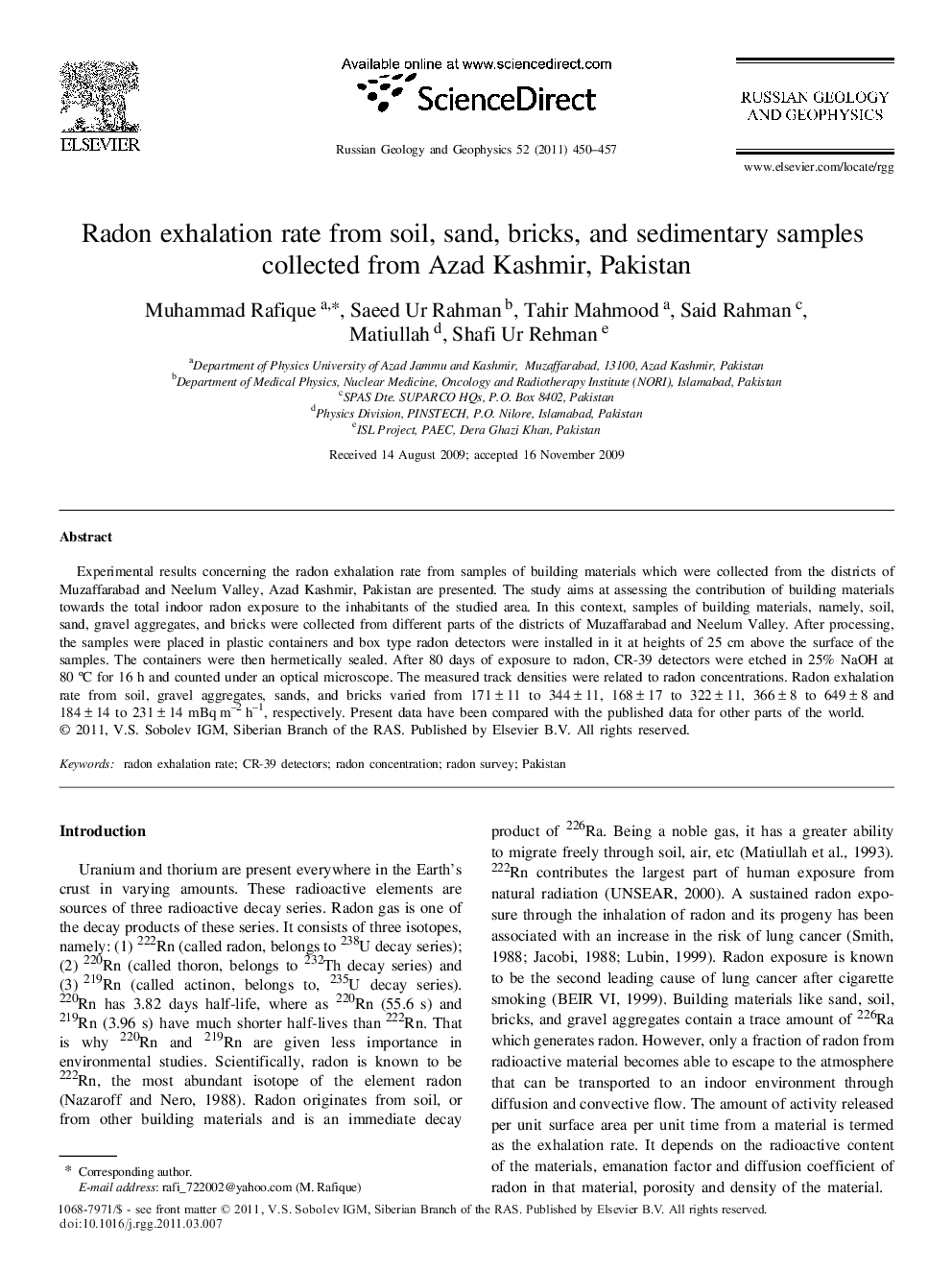| Article ID | Journal | Published Year | Pages | File Type |
|---|---|---|---|---|
| 4739366 | Russian Geology and Geophysics | 2011 | 8 Pages |
Experimental results concerning the radon exhalation rate from samples of building materials which were collected from the districts of Muzaffarabad and Neelum Valley, Azad Kashmir, Pakistan are presented. The study aims at assessing the contribution of building materials towards the total indoor radon exposure to the inhabitants of the studied area. In this context, samples of building materials, namely, soil, sand, gravel aggregates, and bricks were collected from different parts of the districts of Muzaffarabad and Neelum Valley. After processing, the samples were placed in plastic containers and box type radon detectors were installed in it at heights of 25 cm above the surface of the samples. The containers were then hermetically sealed. After 80 days of exposure to radon, CR-39 detectors were etched in 25% NaOH at 80 °C for 16 h and counted under an optical microscope. The measured track densities were related to radon concentrations. Radon exhalation rate from soil, gravel aggregates, sands, and bricks varied from 171 ± 11 to 344 ± 11, 168 ± 17 to 322 ± 11, 366 ± 8 to 649 ± 8 and 184 ± 14 to 231 ± 14 mBq m–2 h–1, respectively. Present data have been compared with the published data for other parts of the world.
